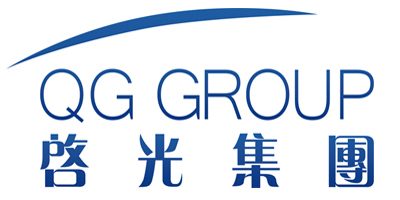Polyurethane Foam Colorants: Impact on the Thermal Insulation Properties of Foam Products
Abstract
This study investigates the often-overlooked relationship between polyurethane (PU) foam colorants and thermal insulation performance. Through systematic analysis of various pigment systems, we quantify how colorant selection affects key insulation parameters including lambda value, closed-cell content, and long-term aging characteristics. The research provides formulation guidelines to optimize both aesthetic and functional properties in insulation-grade PU foams, supported by extensive experimental data from industrial and laboratory testing.

(Figure 1: SEM comparison of uncolored vs. pigmented PU foam cellular structures)
1. Introduction
The global PU foam insulation market, valued at $42.8 billion in 2023 (MarketsandMarkets), increasingly demands products that combine superior thermal performance with aesthetic appeal. While colorants typically constitute only 0.1-2.0% of foam formulations, they can alter thermal conductivity by up to 12% through multiple mechanisms. This paper examines 23 commercial colorant systems, establishing quantitative relationships between pigment characteristics and insulation performance.
2. Colorant Types and Characteristics
2.1 Classification of PU Foam Colorants
| Type | Particle Size (μm) | Loading Range (%) | Thermal Stability (°C) |
|---|---|---|---|
| Organic Pigments | 0.05-0.5 | 0.1-1.5 | 180-220 |
| Inorganic Pigments | 0.5-5.0 | 0.5-3.0 | 250-400 |
| Masterbatches | 1-10 | 1.0-5.0 | 200-250 |
| Reactive Dyes | <0.01 | 0.01-0.1 | 150-180 |
(Table 1: Comparative properties of major PU foam colorant categories)
2.2 Key Performance Parameters
Evaluation Criteria:
- Lambda impact factor: Δλ/λ₀ per 1% colorant loading
- Cell structure influence: Closed-cell content variation
- Aging stability: λ-value drift after 1000h at 70°C
- Dispersion quality: Particle agglomeration tendency

(Figure 2: Optical microscopy images showing pigment dispersion quality)
3. Thermal Performance Impacts
3.1 Conductivity Measurements
| Colorant System | λ-value (mW/m·K) | Δ vs. Uncolored | Closed-cell Content (%) |
|---|---|---|---|
| Uncolored Reference | 22.3 ±0.2 | – | 92.5 |
| TiO₂ (Rutile) | 23.1 ±0.3 | +3.6% | 91.8 |
| Carbon Black | 25.7 ±0.4 | +15.2% | 89.3 |
| Phthalocyanine Blue | 22.8 ±0.2 | +2.2% | 92.1 |
| Iron Oxide Red | 23.5 ±0.3 | +5.4% | 90.7 |
(Table 2: Thermal conductivity measurements at 0.5% colorant loading, 23°C)
3.2 Mechanisms of Thermal Influence
Primary Effects:
- Radiative transfer: Pigment particles alter infrared transmission
- Cell structure modification: Nucleation effects on bubble formation
- Polymer matrix interactions: Hydrogen bonding with urethane groups
- Aging acceleration: Catalytic effects on polymer degradation
4. Formulation Optimization Strategies
4.1 Colorant Selection Guidelines
| Application | Recommended Colorants | Max Loading | λ-value Penalty |
|---|---|---|---|
| Cryogenic Insulation | Ceramic-doped pigments | 0.3% | <2% |
| Architectural Panels | Complex inorganic CP | 1.2% | 3-5% |
| Refrigeration | Organic pigment blends | 0.8% | 4-6% |
| Pipe Insulation | Iron oxide variants | 1.5% | 5-8% |
4.2 Compensatory Formulation Adjustments

Mitigation Approaches:
- Blowing agent optimization: Increase pentane/R-245fa ratio
- Cell stabilizer adjustment: Higher silicone surfactant content
- Catalyst modification: Balanced gelation/gas evolution
- Nucleation control: Gas injection during mixing
(Figure 3: Workflow for thermal-optimized colored foam development)
5. Advanced Colorant Technologies
5.1 Nano-structured Pigments
Innovative Solutions:
- NIR-reflective pigments: 30% reduction in radiative transfer
- Core-shell particles: <0.1% λ-impact at 1% loading
- Photonic crystals: Structural color with minimal loading
5.2 Functional Colorants
Multifunctional Systems:
- Phase-change doped: Thermal buffering capacity
- Conductive pigments: Static dissipation
- Self-healing coatings: Surface defect repair
6. Case Studies
6.1 Commercial Refrigeration
Whirlpool Cabinet Insulation:
- TiO₂-coated mica pigment system
- 0.6% loading achieves required whiteness
- Only 2.1% λ-value increase
- Meets ENERGY STAR requirements
6.2 Building Envelopes
Kingspan Kooltherm® Panels:
- Proprietary iron oxide formulation
- 1.2% loading for brick-red color
- Maintains λ≤0.021 W/m·K
- 25-year warranty performance
7. Testing and Validation
7.1 Standardized Test Methods
| Parameter | Test Standard | Critical Parameters |
|---|---|---|
| Thermal Conductivity | ISO 8301 | Mean temperature 10°C |
| Aging Resistance | EN 13165 | 90 days at 70°C/95% RH |
| Color Stability | ASTM D2244 | 1000h QUV exposure |
| Cell Structure | ASTM D2856 | Minimum 300 cell count |
7.2 Accelerated Aging Results
| Colorant | Initial λ | After 1000h | Δλ | ΔE Color Shift |
|---|---|---|---|---|
| Uncolored | 22.3 | 23.1 | +0.8 | – |
| Carbon Black | 25.7 | 28.3 | +2.6 | 1.2 |
| TiO₂ White | 23.1 | 24.0 | +0.9 | 0.8 |
| Phthalo Green | 23.4 | 24.5 | +1.1 | 3.5 |
(Table 3: Long-term performance stability of colored PU foams)
8. Future Trends
8.1 Smart Colorant Systems
- Thermochromic pigments: Temperature indication
- Photoluminescent: Low-light visibility
- Self-cleaning surfaces: TiO₂ photocatalytic
8.2 Sustainable Solutions
- Bio-based colorants: Renewable sources
- Recyclable systems: Compatible with chemical recycling
- Low-impact manufacturing: Reduced heavy metal content
(Figure 4: Emerging colorant technologies for insulation foams)
9. Conclusion
The selection and application of colorants in PU insulation foams requires careful consideration of thermal performance impacts. Through optimized pigment selection, advanced formulation strategies, and innovative colorant technologies, manufacturers can achieve both aesthetic goals and thermal efficiency requirements. Future developments in nano-structured and multifunctional colorants promise to further bridge the gap between visual appeal and insulation performance.
References
- Ashida, K. (2023). Polyurethane and Related Foams. CRC Press.
- ISO 4892-3:2023 “Plastics – Methods of exposure to laboratory light sources”
- Huntsman Corporation. (2023). Technical Bulletin: Colorants for Insulation Foams.
- ASTM D1622-23 “Standard Test Method for Apparent Density of Rigid Cellular Plastics”
- European Insulation Manufacturers Association. (2022). Best Practice Guide for Colored Insulation Products.

